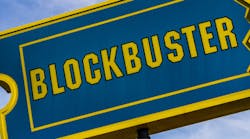What will happen to dental labs?
This article originally appeared in the Principles of Practice Management e-newsletter. Subscribe to this informative twice monthly practice management ENL here.
JUST AS WE HAVE SEEN A CONSOLIDATION IN THE DENTAL INDUSTRY, we have seen similar trends in the number of dental laboratories. Dental Economics has reported on dental lab consolidation from as far back as 2002, and we made it our cover story in 2015. The age of one or two technicians working in their basements is largely over.
Medium to large labs have prospered and, in many cases, have continued to merge or be acquired by even larger enterprises. One could compare this trend to what has been observed in countless other industries, such as mom and pop video rental stores giving way to Blockbuster Video.
However, even Blockbuster Video, Tower Records, and Kmart have faced extinction in recent years. What happened, and will it happen to dental labs?
As I have written before, I believe we are in a challenging economic transitional period called The Third Industrial Revolution. The term, coined by Jeremy Rifkin in his 2011 book by the same name, describes how technological advances in energy, communication, and transportation combine to transform everyday life. Amazon, Netflix, and Uber have successfully challenged their respective industries in part by creating business models around this revolution. I believe we’re already seeing signs that the dental lab industry will face a similar transformation.
Look at the current model: a centralized dental lab receives a physical impression in the mail, manufactures a product, and then mails that product back to the client. We’ve already seen an evolutionary leap in the form of digital impressions, but the business model is still essentially the same. A true disruption would be if a majority of dentists manufactured their restorations in-office. Sure, that technology has been around a long time, but best estimates are that around 15% of dentists have mills in their offices, and certainly far fewer have 3-D printers. There are various reasons why dentists have yet to adopt in-office manufacturing en masse, including large capital expenditure and training to produce quality lab products. But therein lies the opportunity for dental labs.
I believe it is a reasonable prediction that future dental practices will manufacture more lab products on-site. It may take 10 to 15 years before we reach a majority, but technological advances are pushing dentists in that direction. So, what if dental laboratories created a new business model where they remotely design restorations and coach the dental team on using their in-office mills and printers? Perhaps you’ve already heard about some labs offering this service on a per-restoration or subscription basis.
In my opinion, there will always be a need for talented technicians to create restorations and devices, especially ones of the highest quality. While improvements in technology and materials will allow dentists and their trained team members to produce more of these products themselves, I believe it will be quite a long time before we’re able to do so in every case without the aid of a skilled laboratory. While we are in this turbulent transition time, I think dental practices and labs would be wise to reevaluate their business models and revenue streams along the way. No one wants to be the next Blockbuster Video.
Cheers,
RECENT OP EDS FROM DR. SALIERNO
Invisalign drops TRIOS compatibility in the US
Did Amazon just make a deal with Dentsply Sirona?
Invisalign’s relationship with SmileDirectClub
For the most current practice management headlines, click here.
For the most current dental headlines, click here.
About the Author

Chris Salierno, DDS
Chief Editor, Dental Economics
Chris Salierno, DDS, is the chief editor of Dental Economics and the editorial director of the Principles of Practice Management and Group Practice and DSO Digest e-newsletters. He is also a contributing author for DentistryIQ and Perio-Implant Advisory. He lectures and writes about practice management and clinical dentistry. He maintains a blog to answer patient questions at ToothQuest. Dr. Salierno maintains a private general practice in Melville, New York. You may contact him at [email protected].
Updated Dec. 4, 2020

